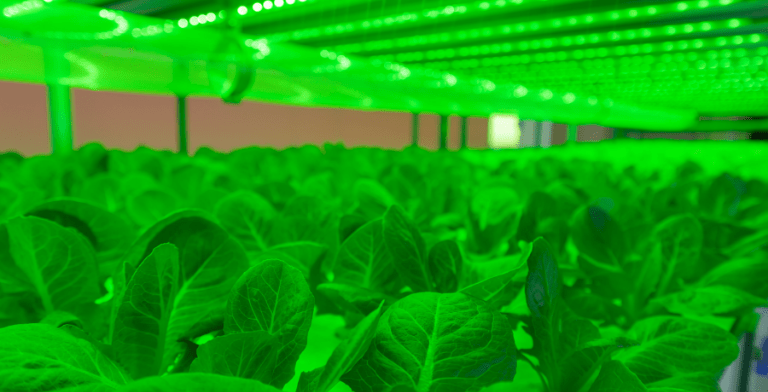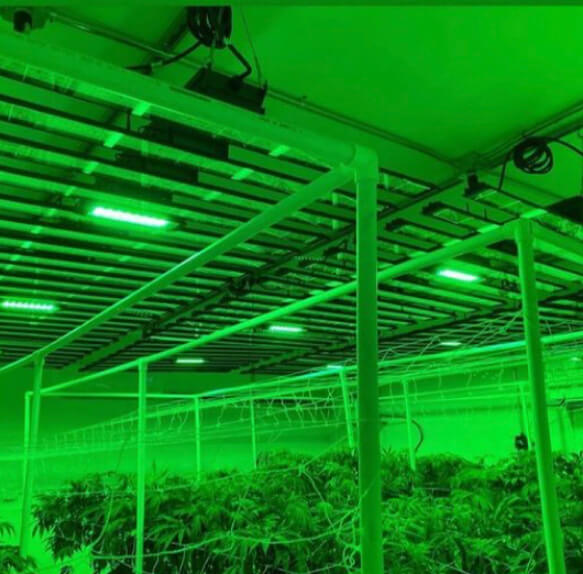Cerathule
Well-known member
so this is what I would consider to be the best spectrum for best quality, isn't it? I wonder how far the UVA stretches down?This is it's spectrum
so this is what I would consider to be the best spectrum for best quality, isn't it? I wonder how far the UVA stretches down?This is it's spectrum
to be honest, I find that chart quite faulty and misleading. it was deriven from Cree's crude investigations using strict monochromatic beams in 25nm steps, so the photochemistry between the 2 photosystems couldn't work correctly, bluntly speaking. It neglects both Emerson-enhancement and sabotages stomatal conductance to influence the results. When in fact green drives photosynthesis much stronger than either red or blue light, but only in the presence of white light. Like, outdoors or under a typical growlamp in flower power setting.I'm pretty sure its settled science at this point, lmao
My concern with LED's vs HID is we switch from 6500K to 3500K for flower. How can one light do best for both?

When in fact green drives photosynthesis much stronger than either red or blue light, but only in the presence of white light.
I'm attaching the studyI have not heard that. Do you have a source?


Why not? It's public and refered to many times.I can't see the report, the title suggests the 2009 paper that doesn't quite hit the mark.
Some plants will grow under green.
Photosynthesis and photoreceptor-stimuli IS NOT the same. The green night-maintenance light is designed to not trigger a phytochrome Pr reaction, to not interrupt the plant's Pfr buildup. Still, the chlorophyll will absorb about 85% of all green photons coming from that weak light.Others don't really notice it
We know all plants do possess the same basic photoreceptors and share significant similarities.If a study isn't on cannabis, it's findings may not matter to cannabis.
Wheat doesn't care for Blue, and it's not alone. While a lettuce goes nuts on it. So work done on one plant of commercial use, isn't knowledge gained on another plant.
Wheat doesn't care for Blue
Yes, and in nature those green photons get deflected and fall onto nearby plant's leaves. The leaves in direct sunlight possess the luxury to scatter a portion of the light away as it's already saturating there. These diffused green photons can now boost places which currently are more light-hungry. Considering less heat stress the "bad green absorption" turns into a 'win-win' mechanism.Plants look green to us as the red and blue are absorbed better, so we see more green bouncing back
Wheat and soybean were less sensitive to blue light, but dry mass and leaf area decreased steadily with increasing blue light. Blue light fraction significantly affected specific leaf area (SLA, m2 kg-1) and chlorophyll in lettuce, but had no significant effect on wheat and soybeans.

wheat did not respond to blue light, but lettuce was highly sensitive to blue light

So put on some sunglasses.I was told to use IR 15 minutes at lights on and off as signalling to produce more resin. Think it is 15 watts that I use. I worry about being in grow room with LED's without sunglasses, since constant IR. My concern with LED's vs HID is we switch from 6500K to 3500K for flower. How can one light do best for both?
So put on some sunglasses.
Did you notice a difference with the 15 minutes IR? Found a site that suggests doing so but they are also selling the gear, so biased.
No, it is not. I just downloaded it flawlessly:I can't see your attachment, because it's a security risk.
I attached/uploaded it, so it is hosted here. For your convenience, so you don't have to leave this very site.It's a pdf hosted where?
??? I'm not offering anything "off site"! And besides, there's VPN. You strike me as a noob that doesn't know how to use internet/PCHowever constantly offering PDFs off site is how IP addresses are mapped.
Ah you think you can understand reality/nature just by looking at it with your eyes?It would be nice if the green light bounced off and lit another plant, but what we are seeing isn't doing that. I have walked in nature myself. Even flown over it. I can assure you, a lot of that green light bounces off and doesn't directly light another plant. Which would again lead to a proportion bouncing off until eventually absorbed you suggest. However that would be a game of pinball where another ball kept joining, until the machine was solid with them. Not all light absorbed is used, which might be the 85% you speak off. An absorbed amount, not the used amount. Though I doubt you will have the grace to explain. Like you don't confirm the article being offered to include me in debate.
Tbh I don't care much about monochrome-colours grown plants at all...I'm showing you plants growing under monochrome green. Find a pot plant doing this. You like to say all plants are the same, but they are not. Pot plants die under green monochrome light, while others thrive. That is not the same.
the paper has been written generally for all plantsI'm guessing your paper isn't about pot
You are comparing apples to oranges.Many plants don't like a lot of blue light. Ours reacts badly to 40% but the sodium growers might be looking at this as a pat on the back.
I know tillering in wheat is increased by blue. I find myself often having the same conversation with you. It's about you reading something and applying it badly.

White light, with the green percentage being changed. 500ppdf like you spoke of, but a few plants. Tomato is our nearest analogue. Didn't really like it. Lettuce shows a real bias towards blue. Cucumber and wheat liked the green.
But yeah, all plants are the same.
You are now tempted to just laugh at my post and not reply. Like being impudent is a win.